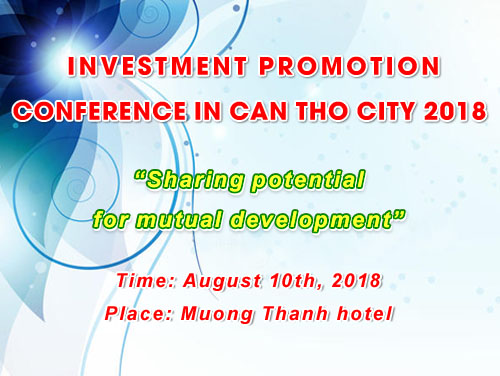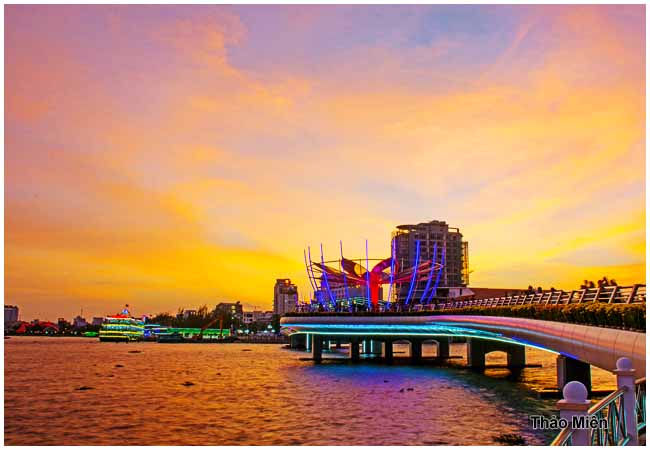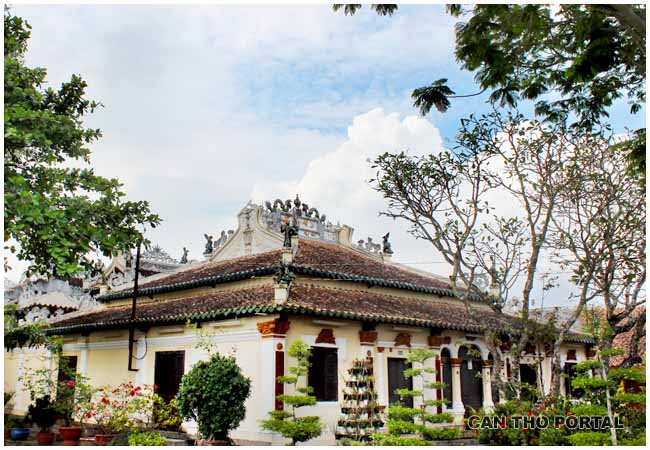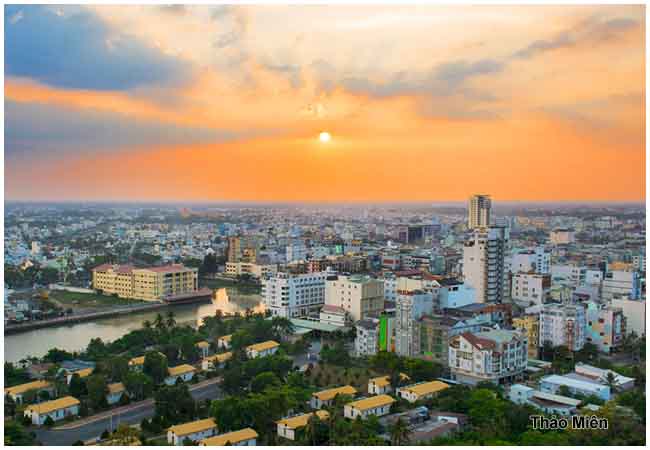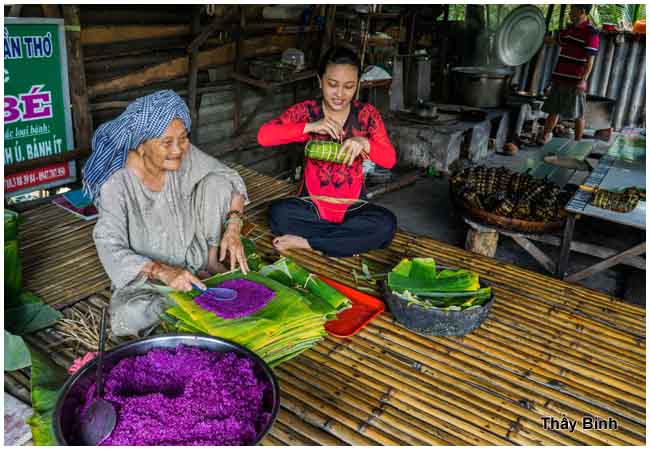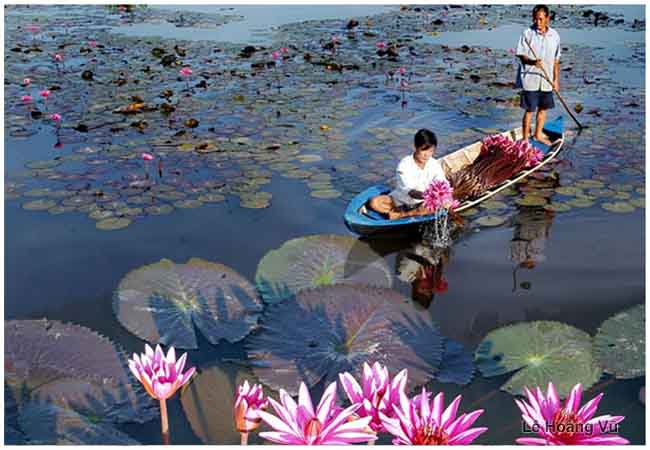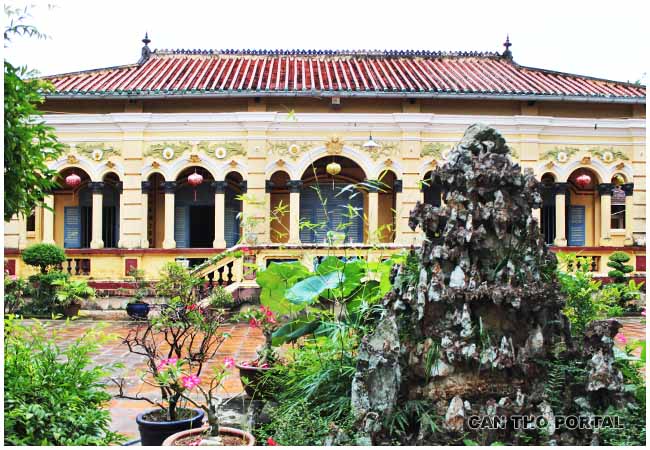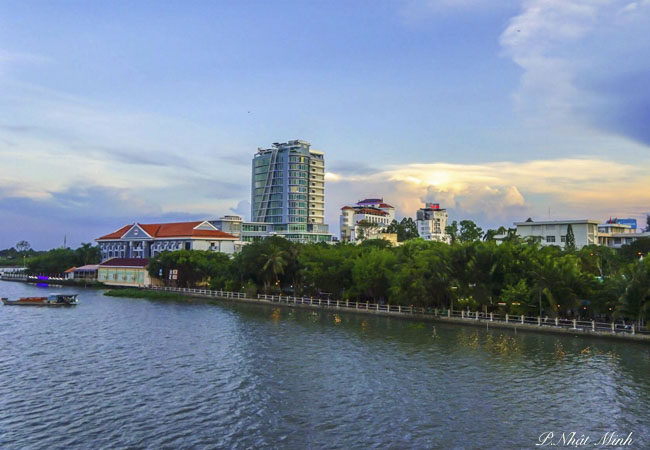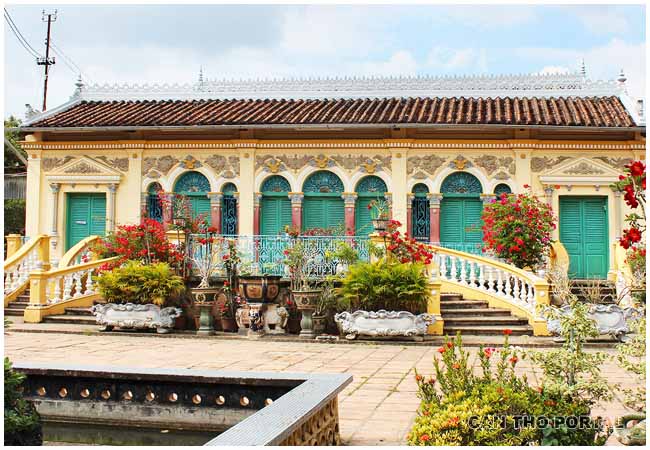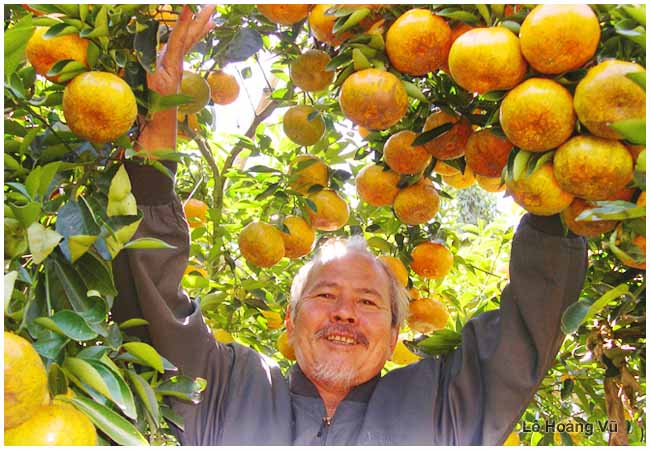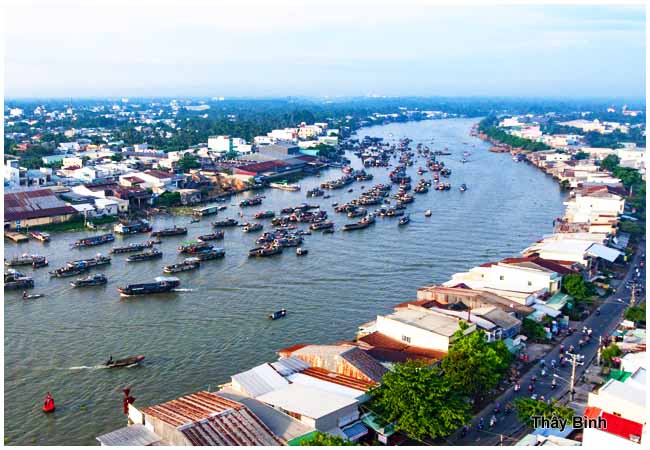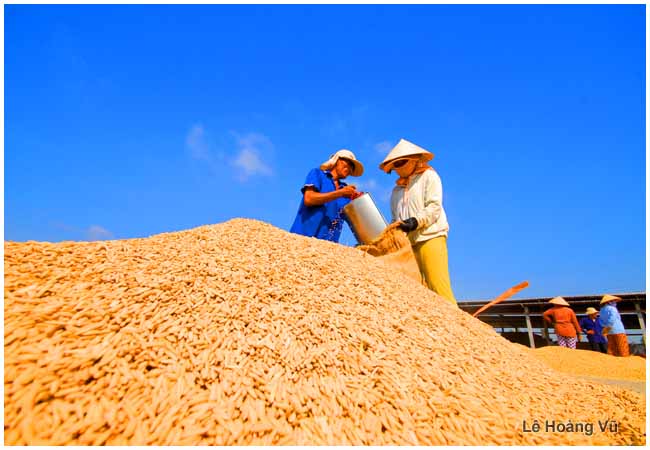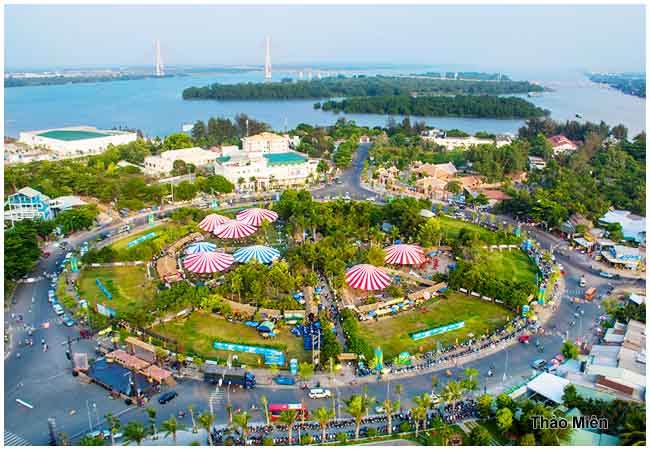Mid- Autumn Festival
 For a long time,
For a long time,
About half a month before the event, various kinds of colourful items, mostly cakes, candies and toys, are displayed for sale along the streets, in the shops and at the markets. Everyone, both domestic and foreign, is eager to go either shopping or sight-seeing. On the festive day, some families cook outstanding food to offer their ancestors during the daytime. In the evening, the mid-autumn festive party is prepared with cakes, candies and fruits. Cakes are various, but a “must” is the banh deo (glutinous-rice dumplings) and banh nuong ( cakes) in the shape of the moon and fish. Fruit, including longans, simmons, bananas, grapefruits, etc…, are also abundant and diverse.
 The Festival is exceptionally interesting for the children who play happily with the bright new toys. The toys are made from various different forms: the lion lead, the animal in folk tales and stories. The lantern are colourful and of various kinds, such as the rabbit, the carp, etc. Besides traditional carton paper toys, plastic and bamboo plates, ships, tanks, etc. made of plastics with batteries and having remote controls are also on sale. This is understandable due to the economic improvements of the people. Whether organised in the city or countryside, the preserved tradition of the Mid- Autumn Festival is reflected in the way the children play games such as seek-and hide, lion dancing, lantern marching, etc.
The Festival is exceptionally interesting for the children who play happily with the bright new toys. The toys are made from various different forms: the lion lead, the animal in folk tales and stories. The lantern are colourful and of various kinds, such as the rabbit, the carp, etc. Besides traditional carton paper toys, plastic and bamboo plates, ships, tanks, etc. made of plastics with batteries and having remote controls are also on sale. This is understandable due to the economic improvements of the people. Whether organised in the city or countryside, the preserved tradition of the Mid- Autumn Festival is reflected in the way the children play games such as seek-and hide, lion dancing, lantern marching, etc.
The welcome-the-moon party in the evening is a good opportunity for the children not only to enjoy the food, but also to learn more from their grandparents and parents. They are told how to prepare the party in the most attractive way. To decorate the party, there is always a “ doctor” made of paper or dough, which reminds the children of the high solemnly shared by the whole family and becomes the most sacred moment of the Mid-Autumn Festival. In the bright moonlight, clear sky and fresh environment, everybody is relaxed with a pure and detached joy.
Tet Thanh Minh
The Vietnamese, and Chinese, calendar is usually referred to as lunar but it is really a combination of lunar and solar. The days and months are based on the phases of the moon, with the full moon in the middle of each month. The calendar is also divided into twenty-four climatic periods, based on the apparent movement of the sun through the zodiac. Thanh Minh is the name of one of these periods. In most years it begins in the third month of the Vietnamese lunar calendar. This year it starts on the 17th day of the second month because last year as a leap year with one extra month.
Thanh Minh literally means clear and bright, indicating that the weather custom of grave visiting during Thanh Minh, and the first days of the period are called Tet Thanh Minh- the Thanh Minh festival. In feudal times the rites of Thanh Minh were listed as one of the main ceremonies of the royal court and were solemnly presided over by the king himself, it was recorded in a book of royal rituals ( Kham Dinh Dai Ban Hoi Dien Su Le) that every year, on the beginning day of the Thanh Minh period, the king, came to the royal temple to conduct the ceremony dedicated to his ancestors. The Ministry of Rites was responsible for all arrangements. In the rural villages, peasant families did not adhere strictly to the calendar, and it became a convention that the first three days of the third month would be the time of the annual festival. In the past, graves were scattered through the paddy fields or on the low hills. During the time of the Thanh Minh festival the people weeded and refurbished the graves of their ancestors and relatives. A ceremony was field in the clan temple or in the house of the head of the clean to commemorate the ancestors.
This was also an opportunity for the members of the clan to meet and strengthen their ties. In recent years, most of the graves have been moved to official cemeteries and many of them are paved with brick or concrete. Little effort is needed for weeding the graves, but the people still visit those of their ancestors to burn incense, not only during Thanh Minh but also during the new year holiday. Grave visiting and the veneration of ancestors is a feature of the spiritual life of the people.
Tet Thuong Nguyen ( Nguyen Tieu)
 According to Buddhist sutras, the first and the fifteenth days ( Tet Nguyen Tieu) of every lunar month are Buddha’s Days, when acts of worship are performed in Buddhist shrines and before family altars. Joss-sticks are lit and trays of fruit and other offerings are laid out. Celebrations related to the Lunar New Year are over, but the festive Tet atmosphere still remains. The weather is mild despite an occasion drizzle, pagodas and temples are crowded with old people telling their beads, young people praying for children…. Fruit and delicacies offered to Buddha are taken back home to be distributed to all members of the family as “gifts” from the deities. In traditional astrology the fate of each person is influenced by one particular star. On the 15th day, an act of worship is performed to the star before a three-level altar. On the top level, offerings of incense and food are made to Heaven and Buddha; on the middle level they are made to the tutelary star; on the lowest level are various foods, including rice gruel, which are offered to the “ wandering souls”. The origins of the sacred character of this particular date are unclear. One version has it that on the occasion of the first full moon of the year, the emperor of
According to Buddhist sutras, the first and the fifteenth days ( Tet Nguyen Tieu) of every lunar month are Buddha’s Days, when acts of worship are performed in Buddhist shrines and before family altars. Joss-sticks are lit and trays of fruit and other offerings are laid out. Celebrations related to the Lunar New Year are over, but the festive Tet atmosphere still remains. The weather is mild despite an occasion drizzle, pagodas and temples are crowded with old people telling their beads, young people praying for children…. Fruit and delicacies offered to Buddha are taken back home to be distributed to all members of the family as “gifts” from the deities. In traditional astrology the fate of each person is influenced by one particular star. On the 15th day, an act of worship is performed to the star before a three-level altar. On the top level, offerings of incense and food are made to Heaven and Buddha; on the middle level they are made to the tutelary star; on the lowest level are various foods, including rice gruel, which are offered to the “ wandering souls”. The origins of the sacred character of this particular date are unclear. One version has it that on the occasion of the first full moon of the year, the emperor of
Tet Khai Ha
Khai Ha is organized on the seventh day of the first lunar month on which the owner offer their ancestors paper money and clothes and says farewell to them. The neu bamboo pole is lowered and a new year is welcomed. According to Vietnamese thinking, if the weather is warm and the sun is shining on khai ha, man will be healthy and fortunate all the year round.
Tet Doan Ngo
Held on the 5th day of the 5th lunar month, Tet Doan Ngo is also called Parasite-Killing Festival. This is a mid-year festival to enhance the prevention of evils and illnesses, and the memory of the ancestors.
 Tet Trung Nguyen
Tet Trung Nguyen
Also called “ All souls day”, is on the 15th day of the 7th lunar month. On this day, people always come to the pagodas to make lavish offerings to the wandering souls.
Tet Trung Cuu
Or the Double Nine Fete ( on the 9th day of the 9th lunar month ) comes from
Tet Trung Thap
Or the Double Ten festivities ( on the 10th day of the 10th lunar month) is in fact the harvest festival. As for physicians and traditional herbalists, it is the day when the medicinal herbs can absorb both the positive and the negative of the universe.
Tet Tao Quan
The Vietnamese have a custom of seeing off Ong Cong ( the Land Genie ) and Ong Tao ( the Kitchen God ) on the 23rd day of lunar December. Both go to Heaven to brief Ngoc Hoang ( the Jade Emperor) on the life of the owner of the house where they stay, and pray for luck, prosperity and happiness. On New Year’s Eve, both Gods will come back to earth and continue their routine duty of looking after the kitchen of the house.
The custom of worshipping Ong Conga and Ong Tao originated from a myth that dates from ancient time. There was a couple, so poor that they had to go far away to earn their living. They lost each other. After a long time of unsuccessful looking for her husband, the wife married another man. One day, her old husband unintentionally called at her house to beg for food. The old couple recognized each other. Feeling sad and embarrassed at the situation and unfaithful to the old husband, the wife jumped into the fire and burned to death. The old husband, sorry for the wife, also jumped into the fire, as did the new husband. Hearing about their faithful love, the jade Emperor permitted the three of them to live together as the Kitchen God to enjoy the blessings.
On the Ong Cong and Ong Tao festival day, people usually prepare steamed sticky rice with sugar porridge, truncated cone-shaped cookies made of sticky rice, incense joss sticks and flowers for a worshipping ceremony. They also prepare a basin of water in which they put one big live carp or three small ones. After the ceremony, the carp are released into the pond or the river. This custom as two meanings. First, as popular thinking goes, the carp can swim well and it will pass Vu Mon ( Heaven’s gate) to become a dragon. Thus, Ong Cong and Ong Tao ride a carp, i.e. a dragon, to heaven. Second, the custom of releasing the carps refers to a custom of releasing animals, such as birds into the air and the beasts into the forest, which is considered a kindhearted deed to pray for good luck.
The custom of worshipping Ong Cong and Ong Tao as the Land Genie and Kitchen God has a humanist value, reflecting the family happiness. The fire in the kitchen manifests not only the cozy family union, but also the bumper harvest and agricultural development.
Holidays
Sunday is a holiday for all state institutions. There are also 8 other holidays each year:
January 1st: 1 day
April 30th Saigon Liberation Day: 1 day
May 1st International Labour Day: 1 day
September 2nd National Day of the Socialist Republic of Vietnam : 1 day
Traditional Tet : 4 days ( usually occurs between January and February. The holiday begins from the evening of the previous lunar year and lasts until the third day of the new year.
Celebrations
February 3rd: Foundation day of the Communist Party of Vietnam
May 19th : Birthday of President Ho Chi Minh




